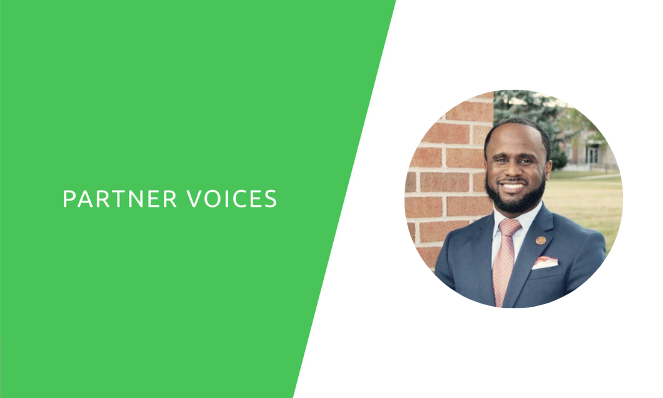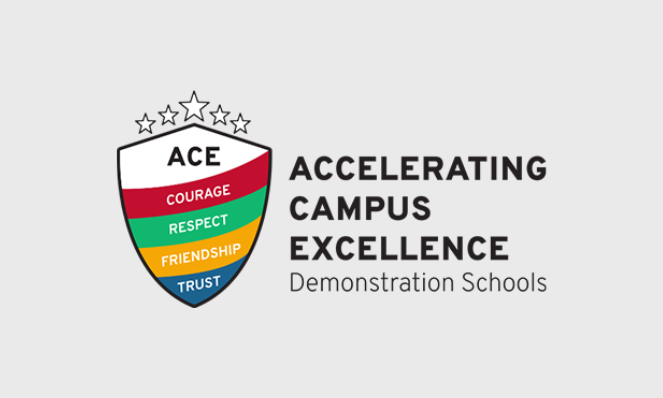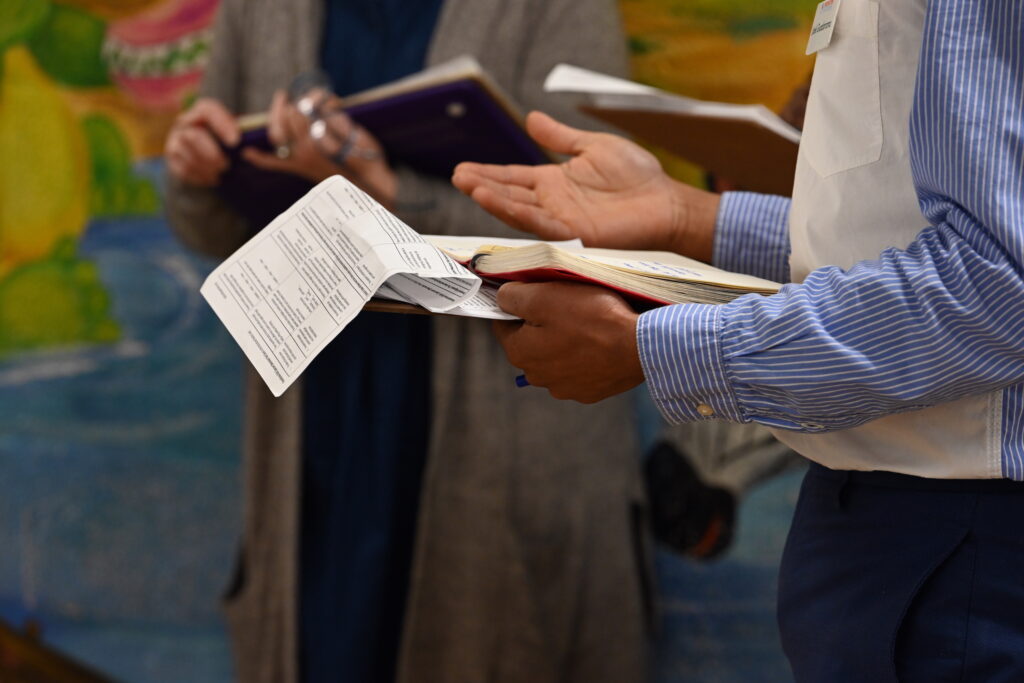
Partner Voices: Tindley Summit Academy Principal David McGuire
Our partners in school systems across the country are sharing their experiences of the challenges and successes of teaching, learning, and leading in the time of COVID-19.
Principal David McGuire spoke to Mia Dunlap, Director of Instructional Support at Instruction Partners, to reflect on the first chapter of distance learning and share his team’s priorities for school reentry planning. Mr. McGuire is the principal of Tindley Summit Academy, located in Indianapolis, Indiana.
This conversation took place on June 4, 2020. Watch the full conversation or read the abridged Q&A below.

DM: I’m David McGuire, the proud principal of Tindley Summit Academy, a charter school located on the far East side of Indianapolis, Indiana, as part of the larger Tindley Accelerated Schools network. Our mission is college or die. We believe that our students will have the capabilities to go to college and that their options for college won’t be something that someone else will dictate. It will be dictated by their own hard work and perseverance. We believe that our students, regardless of their past academic performance, race, ethnicity, or socio-economic status, will have the opportunity to go on and graduate from a four-year college university. We start there as early as kindergarten.
MD: Shout out to y’all. That is amazing. We want to really dig into all the amazing things that y’all are doing. There are so many other folks who want to know what’s working, what challenges are you facing, and what can folks be doing differently as they prepare for this new world that we’re going into.
What was your distance learning model during the past few months?
DM: Like everybody else, our entire world has shifted on its head. Basically, we got out a week early for our spring break. We basically had three weeks to prepare. And so, my AP and I created a distant learning plan. We call it a “virtual learning experience.” We created a plan that we thought was beneficial for our parents. We utilized some of the technology that we had in our network that we hadn’t really used. We’re a Microsoft school, but we hadn’t used much of the components of Microsoft outside of the email. So, we tapped into Microsoft Teams, which allowed us to do the virtual learning zone. We use Microsoft streams, which was our video hub where we store our lessons. If students missed the live lesson, they could go back and watch it later. And then we bought a Schoology account. So we went from having absolutely nothing, including technology for students, to now we’re one-to-one in grades 3–6, which is something we’re really proud of. We now have a virtual learning experience that not only will benefit us if, God forbid, we have another COVID pandemic. But also if students are absent, they can still log on and participate in class and not really miss a beat.
MD: What are you going to continue in the fall in the summer of what you already started?
DM: We finished distance learning on May 21. We are currently in summer school for grades 3–6 until June 25. We’re continuing to use technology. Even in the fall, we’re going to be one-to-one across the building. We’re going to have Chromebooks also for kindergarten, first, and second grades. We’re going to encourage our teachers to continue to use the Chromebooks, encourage our teachers to save on paper. To post their assignments on Schoology and students will submit on Schoology because we’re able to connect our Schoology to our Power School so teachers can give grades. We’re going to make our students more technology-savvy from an educational standpoint. We want them to be more tech-savvy when it comes to their learning.
MD: What do you think that your model is going to be when you go back to school? Do you feel like you’re going to be on-site or students will be still learning from home? What do you think?
DM: What I’m hoping for is that we’re on-site, because, in the population that we serve, our parents can’t afford to not go to work. They can’t afford to not be working and to do some of the hybrid models that people talk about where they have some kids going this day, some kids going down that day, that just isn’t feasible for our demographic. And so what we’re planning for is to make sure that we’re ready to go academically to welcome students back. More importantly, from a safety and health standpoint, we’re making sure we put in the proper procedures to keep everybody safe—students, teachers, staff, and even parents.
MD: I think across the board, there’s a lot of promotion of the hybrid model or distance learning model. And what I hear you saying is, our families can’t afford to have to stay home with kids another X amount of months.
DM: Our students can’t stay at home by themselves, right? And parents can’t afford to send them to daycare to monitor their virtual learning. Honestly, if schools are not open, then there are not many daycares. So it’s important that we’re able to go back to school because I don’t think the workforce and the school systems are going to be on the same schedule. So people are going to go back to work, but if schools are closed, what are these parents going to do so?
MD: What are some things you put in place to have that be safe and equitable and also make sure that students get the kind of depth of learning they need?
DM: First, from a safety and health standpoint, we’re going to monitor and follow the guidelines of the CDC. We’re purchasing PPE. We’re not going to share supplies between kids—they each have their own individual school bins. We’re going to promote healthier habits, we’re not going to do large assemblies, and they’re going to eat in their classrooms. We’re also going to educate our parents on the importance of acknowledging if your child does have a slight temperature so we can keep everybody safe. And we’ll be making sure that we are monitoring with our school nurse and school leaders, monitoring scholars and making sure they’re feeling healthy.
From an academic standpoint, we’re going to look at where our students ended virtual learning. We’re looking at where we need to pick up not only things that were possibly missed last school year, but also making sure we stay moving ahead. Because my mindset is, for the students that we serve, the system is not going to pause the expectations for student proficiency. We have to make sure that they’re still able to meet that bar because there are schools in more affluent areas where students probably didn’t miss a beat because they were equipped to do virtual learning and might have home situations that were a little more conducive for virtual learning. Our students are going to be still compared to the same bar and still be expected to take the same assessments. And three, four years from now, students won’t be able to use COVID-19 as an excuse why they’re not college-ready. We can’t allow our students to fall into that, and we have to be smart and intentional about how we close some of those gaps.
MD: There are two things I’m thinking about. 1) What if it is not on-site? What’s the plan for distance learning? And 2) I’m really curious about some of the tools and support that Instruction Partners is giving to your school to be prepared to catch back up from unfinished learning.
DM: For your first question, we believe we have a really good virtual learning plan, especially because now, different from when we left, our K–2 scholars will have the technology. If we can’t come back next year and have to do distance learning, they will have the technology. So we closed that gap and provided that access. We also gave surveys to teachers, to parents, and to students about what they liked and what they didn’t like. So we’re going to make some minor tweaks. Really, for us, it’s just about getting people more comfortable and getting our students more comfortable. They can do chats and videos, and our students and teachers and parents are more comfortable with navigating through Schoology, finding the assignments, posting the chat and things like that, and just getting everybody comfortable to now shifting to this virtual learning. We all went to school to be teachers in a brick and mortar. We didn’t go to school to teach virtual learning. So it’s an adjustment. We just learned a different way to teach and engage students.
That’s one of the things that we learned from Instruction Partners. As a principal, what I first asked them, I said, “We’re making the shift to distance learning. How do I still coach and hold teachers accountable? What does that look like?” And Instruction Partners helped me create a tool that allowed me to still observe teachers and provide effective feedback.
Featured leadership tool:
Tindley Virtual Learning Teacher Rubric
From a virtual standpoint, we worked on how we could gauge student learning differently. How we can still conduct weekly data meetings by looking at student data from a virtual standpoint. They helped us fine-tune our schedules, which was the best practice on how many hours students should spend on virtual learning a day in a week. Now, we’re talking about, “How do we give out assessments during virtual learning? How do we use that assessment data to now drive what we do for the next school year and then what to do about a reentry assessment?” My last conversation with Instruction Partner was, “What does the reentry assessment look like that gauges students not only on the skills that they should have learned last year, but also the skills they need to be prepared for? How do we take that data to now basically recreate our curriculum pacing guide?”
MD: What have you seen the impact of those supports so far?
DM: Our teachers saw the same energy and the same high standards for their teaching that we had in the classroom carried over to virtual learning. They were still getting feedback on bite-sized and measurable things they can improve on, and we were still observing their classrooms. We were hopping in their videos and watching their lessons and providing them feedback or watching their videos later.
Our students and our families also saw that, even in virtual learning, they still have expectations. Our kids got grades, they’re getting report cards. We’re part of that small number of schools that still felt it is important to provide students with grades, with academic feedback, and hold them accountable because we had a plan and wanted them to follow. I think our parents appreciated that because we keep kids learning at all costs. That’s been the model. Kids learn at all costs, whatever you need to do. Our CEO and our Network staff purchased the Chromebooks and we purchased Schoology, we purchased all these things to make sure that a dollar amount won’t be why our kids won’t learn. That shouldn’t be the determination of whether kids receive a quality education.
It’s the mindset. If you’re preparing for college, you’ve got to mean it. A global pandemic is bad in itself, right? Not only do you have kids suffering the pandemic of health, you don’t have a pandemic of academics where kids aren’t learning.
Featured leadership tool:
Tindley Elementary Virtual Learning Expectations
MD: I’m curious about what the feedback looks like. I think a lot of schools have been trying to figure out the feedback piece. What was your participation rate like from students?
DM: So for the feedback, you obviously can’t grade it the same way you would grade during the school year. So that was slightly different. However, because we were still teaching to the standards, we expect that same mastery, right? So with schools, especially for grades 3–6, students were expected to have math problems that they have to solve for and show their work. And they constructed the response questions and discussion board to show that they understood the author’s purpose and things like that. So we could grade off of that work. For our younger kids, we did a hybrid—we gave them a packet but the packet coincided with the video that the teacher taught. A lot of our K–2 scholars weren’t able to log on live because their homes didn’t have the technology, or they were sharing technology. So a lot of them watched the videos later because they can access it in streams, so they use mom’s phone or dad’s phone when they got off work or the tablet. And they could watch the video as a family at six o’clock at night, and then work on that packet that was corresponding for that day. We graded our students on a 0–5 scale. For their packets, 0 basically is you didn’t do anything, you didn’t even turn it in, 1 is you did some of it, 2 is you completed it but you know have some gaps, and then 5 was it was perfect.
From a participation standpoint, so in live lessons for grades 3–6, we averaged around 75-80% of kids. Meaning, if ELA starts at 9 am, 80% of my kids log on—with some grade levels higher than the others. Surprisingly, for one of our second-grade teachers, and we didn’t have the technology for that grade, she averaged about 95% of her kids in her class logging on live each day. When you build those relationships throughout the school year, even with the shift to virtual learning, those parents and those students still have that same buy-in to the teacher. So when the teacher says, “We have class at 9 am,” kids are using cell phones, tablets, neighbors’ devices, because they have this buy-in and this commitment. And so virtual learning showed us which teachers established authentic relationships with their scholars and families during the school year, because now they have a different type of buy-in. If you don’t have that relationship, parents can kind of use the wiggle room to say, “Well, my kids will just watch it later.”
MD: I love that. Don’t just get their advice in for the sake of getting it but also listen and implement it. That’s so important.
What tool from Instruction Partners has been the most effective? What’s the reason you would say you got to work with instruction partners?
DM: You can tell from this conversation that I’m big on relationships. And I just really feel like the team at Instruction Partners is our extended family here. They know that they’re always welcome. And they know that myself and my assistant principal will always call them or email or text them “I got this idea” and they’re very open to it, and they’re there. Their job is to make sure that I’m successful as a leader, and my teachers are successful as teachers. But ultimately, that my kids are learning too. And Instruction Partners also believes that kids learn at all costs, pandemic or no pandemic, no resources or resources, that kids still need to learn. If you’re looking for a partner that’s going to be a part of your school family and believe that all kids can learn, Instruction Partners is definitely a partnership you should invest in.
MD: Thank you. We are grateful that we are partnering with you and we look forward to continuing to work together.


